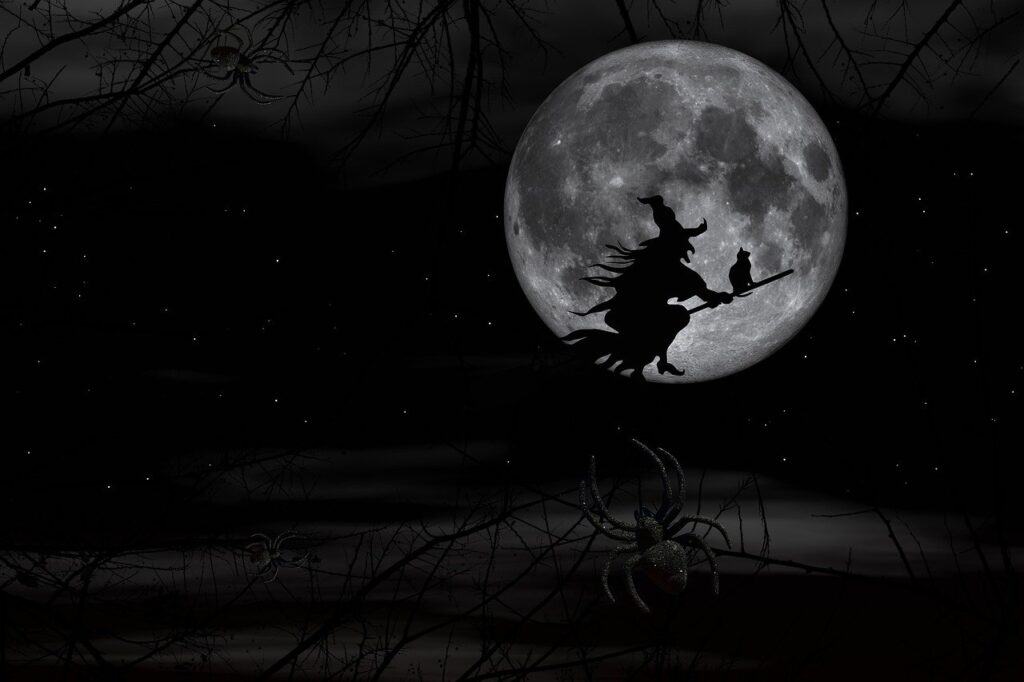
Flying on broomsticks is part of the traditional stereotype of a witch. It’s a solid archetype but is it true?
So far in this series, we’ve talked about witches and witchcraft and now we’re exploring the alleged use of brooms as mechanisms for flying. Named after the plant they were made of, the broom (besom in old English) was an everyday tool used to sweep hearths, floors, and doorsteps. Somehow they found their way into stories about witches. Let’s see if we can find out why…

Witchcraft was one of many pre-Christian beliefs, rooted in older traditions, which the church had consistently tried to outlaw and demonise. However, there were few records of women flying on broomsticks until the 14th century.
In 1324, Lady Alice Kyteler was the first woman to be condemned for witchcraft in Ireland. I can’t find the original court records but several internet sources, albeit without references, cite the trial contained the following evidence.
‘In rifleing the closet of the ladie, they found a pipe of oyntment, wherewith she greased a staffe, upon which she ambled and galloped through thick and thin.’
If acccurate, this might be the first official reference to witches flying, alongside the first association of broomsticks and hallucinogenic substances.
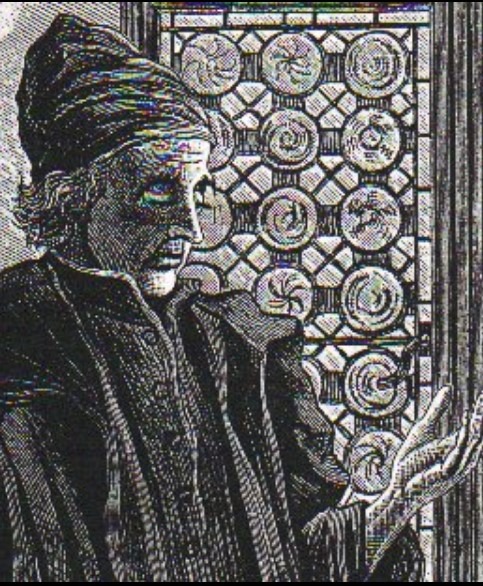
Johannes Hartlieb wrote The Book of All Forbidden Arts, Superstitions, and Sorcery in 1475. It contains the oldest known description of what witches were alleged to use, namely a variety of herbs, including the psychoactive henbane, in ointment form.
Nearly a century later, in 1563, a Dutch physician Johann Weyer wrote Praestigiis Daemonum (On the tricks of demons) which added mandrake, deadly nightshade and jimsonweed to the mix.

It’s thought the rye bread of the time would have contained ergot, which has hallucinogenic properties, and wolfbane has also been named as a potential constituent. Digesting these herbs could cause sickness but an ointment could be applied topically and absorbed through the skin.
As an explanation it has possibilities, but would need to be tried and tested scientifically to be believed.
Surprisingly, the first official record of flying was not a woman but the French Prior Guillaume Edelin. He confessed to being a witch and travelling on a broom in 1453. He later repented but the story took flight – as it were. Ironically he also claimed it was impossible for the Devil to make pacts and belief in witchcraft was folly.
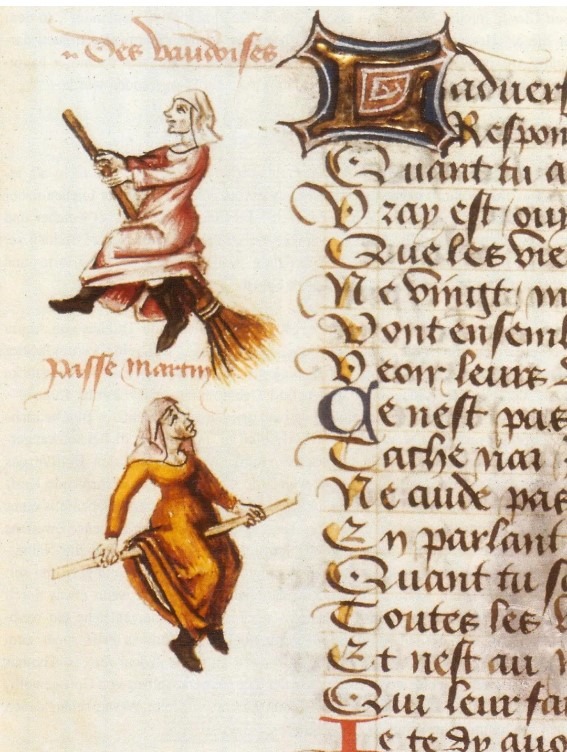
The first image of women flying on broomsticks is believed to be in the manuscript of French poet Martin Le Franc’s Le Champion des Dames (The Defender of Ladies), published in 1481. Le Franc condemned witchcraft and the book contained two drawings of women flying. It’s been suggested their headwear identifies them as Waldesians, a 12th century sect who claimed women could be priests. Not surprisingly, the catholic church duly persecuted them, but it reinforced connections between women, witches and heresy.
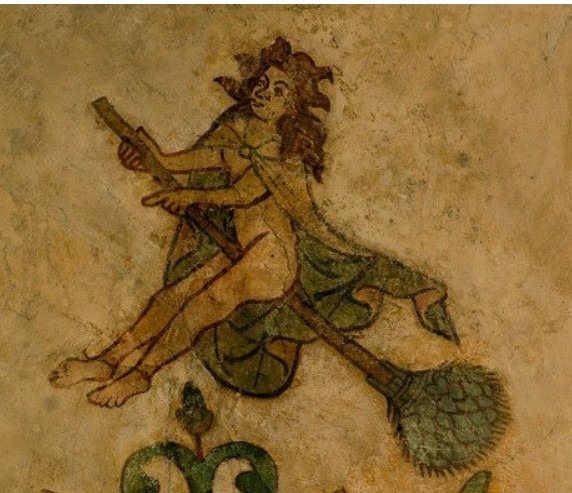
There’s an image of a woman flying on a broomstick in the Cathedral of Schleswig. The date is disputed – initially labelled 12th century, this was changed to 13th century, and more recently 1450 has been suggested. A 2002 paper by Wolfgang Schild, cited here and titled Die zwei Schleswiger Hexlein. Einige Seufzer zu Lust und Last mit der Ikonologie, seems only available in German. The image remains intriguing and the date disparity reinforces how difficult it can be to find any absolute evidence.
The internet also cites the fifteenth-century records of a theologian, Jordanes de Bergamo, who is alleged to have written;
“But the vulgar believe, and the witches confess, that on certain days or nights they anoint a staff and ride on it to the appointed place or anoint themselves under the arms and in other hairy places.”
I can’t find any original sources for this, or about Jordanes de Bergamo himself. If anyone can help, or knows the court records of Alice Kyteler from above, please leave a comment below.
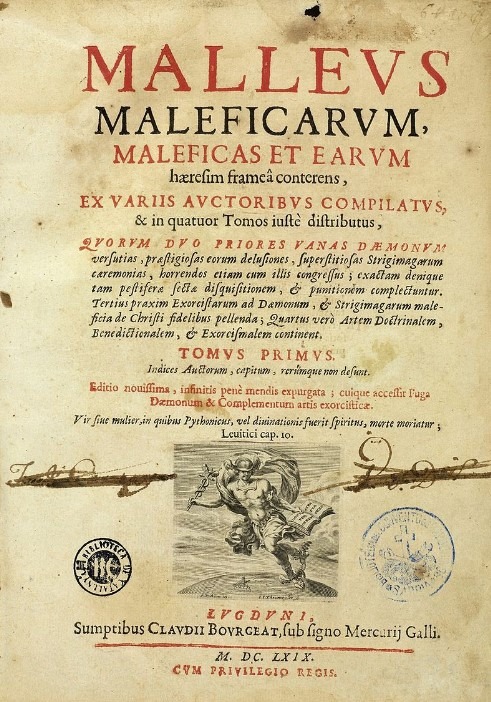
The most influential text regarding witches flying on broomsticks is the Malleus Maleficarum written by German clergyman Heinrich Kramer. First published in 1486, it supported the claim witchcraft was an evil heresy. Witches should be tortured in order to confess, before being sentenced to death. Despite not being fully supported by the church, the Malleus Maleficarum was out there and widely read. It remains a shocking text in terms of the fantastical activities witches were supposed to engage with, and other posts will examine some of its horrors in more detail. For now, a whole section is devoted to flying and this is worth looking at.
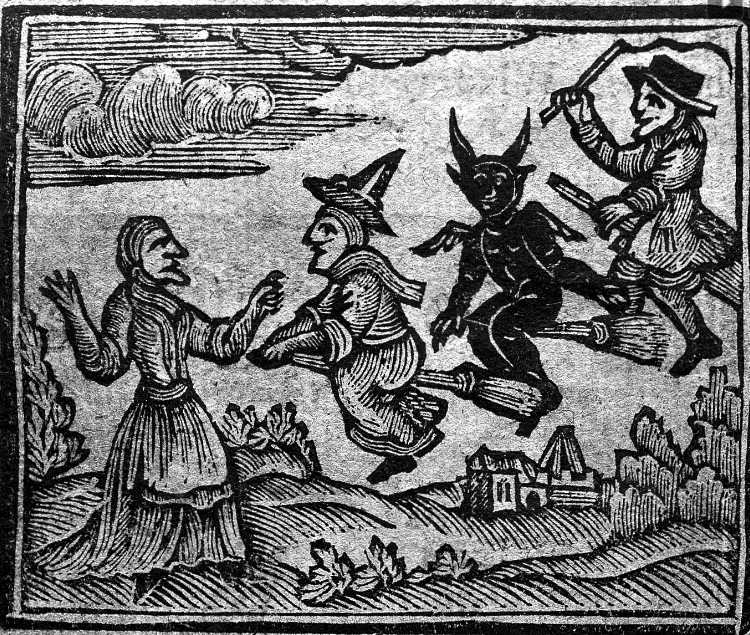
Malleus Maleficarum, Part 2, Chapter III, is titled How they are Transported from Place to Place.
And among their chief operations are being bodily transported from place to place and to practise carnal connexion with Incubus devils.
This gives you an idea of the tone of the book!
Confessions of flying were evidence of the power of the devil, who;
transforms himself into various shapes and forms; and by deluding in dreams the mind which he holds captive, leads it through devious ways
Kramer discusses the nature of belief because if both greater and less things can be done by the permission of God, then flying was possible and he sets out to prove it.
Firstly it was known men could fly. For example, Kramer writes;
what of those Magicians whom we generally call Necromancers, who are often carried through the air by devils for long distances?
It could not be said witches were unable to fly;
if He [god] permits it in the case of the just and innocent, and of other Magicians, how should He not in the case of those who are totally dedicated to the devil?
You get the idea.
It’s one thing for men to practice magic – they are the just and innocent – but women can only do magic if they are in league with the devil.
Kramer also writes about the witches ointment mentioned above, but in this case it was something more sinister.
They make at the devil’s instruction from the limbs of children, particularly of those whom they have killed before baptism, and anoint with it a chair or a broomstick; whereupon they are immediately carried up into the air, either by day or by night,
The devil can also transport the witches on animals, which are not true animals but devils in that form.
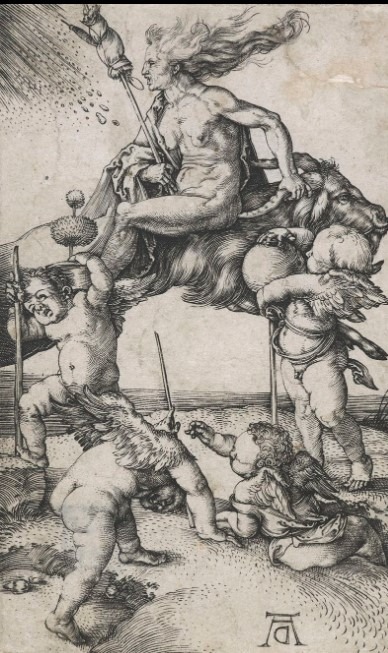
Kramer fills the text with examples. In one of these a witch was not invited to a wedding. She took her revenge by summoning the devil who she asked to raise a storm. The devil flew her to a nearby hill, in the sight of some shepherds, who later came forward to claim they had watched. The woman also confessed.
… as she afterwards confessed, she had no water to pour into the trench (for this, as we shall show, is the method they use to raise hailstorms), she made a small trench and filled it with her urine instead of water, and stirred it with her finger, after their custom, with the devil standing by. Then the devil suddenly raised that liquid up and sent a violent storm of hailstones which fell only on the dancers and townsfolk.
It’s hard to know how much of the book is based on hearsay, court archives or Kramer’s own mysogynistic imagination. It’s worth reminding ourselves how the only knowledge we have from the past is what those with power wanted people to believe. Interestingly, of all the accusations made against women alleged to be witches, it was the flying on broomsticks which seems to have been most doubted.
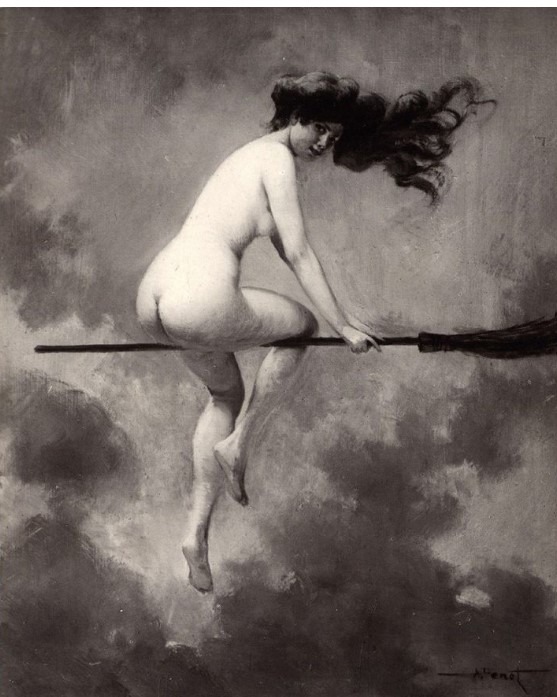
From the records we have, there’s a notable lack of confessional text referring to broomsticks, and by the 17th century the notion of witches flying was being discredited. King James 1, author of Daemonologie and royal hater of witches, cited the view that only God could perform miracles. To fly was to go against the laws of nature, i.e. against god, so was not something witches could do.
Yet the idea of witches consorting with devils, flying on broomsticks, keeping familiars and wearing pointy hats all seem to be embedded in human consciousness.
The associations remain constant.
But is any of it true? Could they fly, did they believe they could fly or was it all a figment of an over superstitious imagination? What do you think?
The next post will talk about witches hats so watch this space…
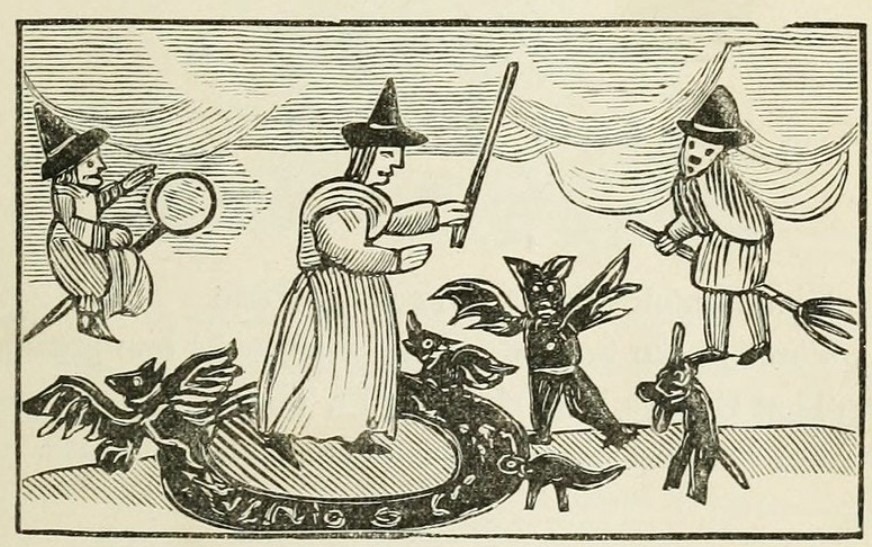
One thought on “Lets talk witches and broomsticks”